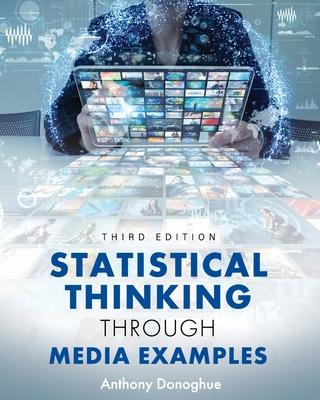Statistical Thinking through Media Examples uses real-world examples from various media to give students an introduction to fundamentals of statistical thinking. Unlike many standard texts in the discipline, the book focuses on conceptual understanding-the meaning behind mathematical calculations rather than the calculations themselves. The book presents a rigorous introduction to statistical thinking, the necessary foundation for both the discipline of statistics and data science.
Written in accessible language, the book begins by discussing the importance of learning how to assess the quality of research results presented by the media. This understanding creates an essential context for the following chapters on questioning study design, including polls and surveys. The remaining chapters explain the foundational concepts-probability, reasoning with variation in data, confidence intervals, hypothesis testing, and linear regression-through media examples. Students also learn how hypothesis testing can be misused and manipulated by researchers to provide a desired result.
The third edition features contemporary media examples and related research findings on a variety of issues, including hydroxychloroquine and COVID-19, the effectiveness of mask recommendations, vaccine hesitancy and COVID-19, the inaccuracies of poll projections in swing states during the 2020 election, obesity and COVID-19, racial inequality, and climate change.
Statistical Thinking through Media Examples is an ideal resource for any course that deals with introductory statistics, particularly those in the health and social sciences, journalism, and business.
